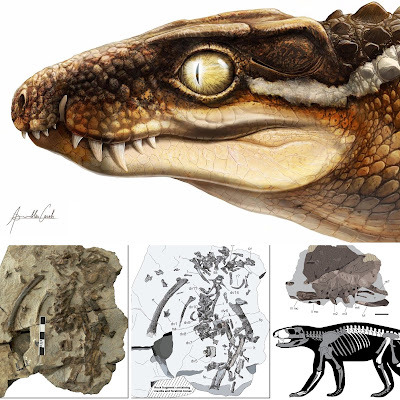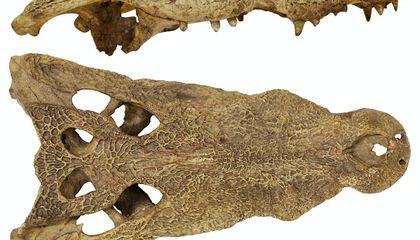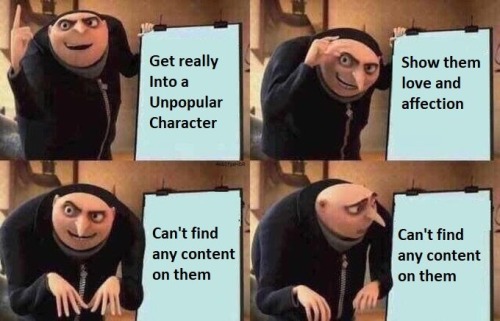Short DPXDC Prompts #191
Short DPXDC Prompts #191
Soulmate au: you get injured, the soulmate keeps the weapon that injures them. Danny has a drawer in his room that’s filled with used bullets and knives and every weapon under the sun and his parents and himself are VERY concerned for his soulmates being. You know when like fairies walk and flowers spring up from their footsteps? Yeah Danny is like that but with weaponry and it’s very worrying.
More Posts from Gatortavern and Others
OHHHHH this is so cool! He looks absolutely amazing! Thank you so much!

@gatortavern
caught her in perfect deviantart oc ref sheet pose

Prehistoric Planet Croc Ideas
So this was a thing I did on Twitter in anticipation of Prehistoric Planet. Obviously crocs (in this case meaning crocodylomorphs) were a pretty massive part of earth's fauna during the late Cretaceous, and seeing as the first season featured NONE I came to speculate which taxa could hypothetically make an appearance. Now part of the challenge for myself was to come up with a new, interesting contender every day in anticipation of the show's release, each based around the confirmed episides we had and restricted purely to taxa from the Campanian and Maastrichtian. While it took a lot of energy, I did manage to do so. Hell, halfway through they dropped the reveal of Simosuchus, which I had saved for later.

Obviously we didn't get much still, but I'll regardless post my list of candidates and ideas here, perhaps third time's the charme for a lot of these (tho for convenience I'm still ordering them by S2s episode titles). I'll also try to break them apart roughly by biome, starting with islands. PS: I'd love to hear which crocs people would have loved to see themselves. Any on this list or stuff I didn't even mention? Let me know I'm curious.





We got a shit ton of island crocs from the Cretaceous actually, which you can broadly divide into two categories. The crocodiles of the European archipelago as seen in the top row. Featuring the small, possibly shellfish eating Acynodon (art by Adramelech89), the incredibly widespread Allodaposuchus which did have some possibly semi-terrestrial forms (art by Alejandro Blanco, Aina and Agnès Amblás) and Aprosuchus, a tiny terrestrial critter from Hateg (art by @knuppitalism-with-ue). They already give a nice diversity between tiny durophages with blunt snouts, large, more traditional crocs and lanky land species.
The other island category concerns Madagascar, which had a lot of attention in season 2. Discounting Simosuchus, we got Araripesuchus tsangatsangana (art by Scott Hartman) and Mahajangasuchus (art by Mark Hallet). Both are really cool. The former is yet another smaller terrestrial species that may not actually be part of Araripesuchus, while the later is a massive, 4 meter relative of the famous Kaprosuchus that took to the water independently from all other crocs and has been nicknamed "Hippo croc" for its weird skull. Really I'd have loved to seen an episode entirely dedicated to this place.
Next up we had the badlands episode, which oh boy has a lot of contenders from the clade Notosuchia. Brace yourself.








Here again I could split these in two categories. The first is just general badland taxa. There's Ogresuchus for example, from Spain's Tremp Formation (art by Aina and Agnès Amblás). A relatively small sebecid found in a sauropod nesting site. And we all know what PhP does with baby sauropods. Or the long-necked Gobiosuchus (art by @yoofilos) from Mongolia, which may look like its related to the other ones in this category but actually is a far more ancient type of croc.
The far bigger group concerns South America's Notosuchians. ALL OF THESE are from the Bauru Group, with some even from the same single formation. You got Stratiotosuchus (again by Joschua Knüppe), a large terrestrial baurusuchid that filled the nische of mid sized carnivore in an environment shared by sauropods and abelisaurs. There's Pissarrachampsa (by Felipe Alves Elias), another baurusuchid I decided to feature because we have evidence of a nesting site that shows they only had few eggs. A great opportunity to show their tender side. Uberabasuchus (justin_an74), part of the bizzarly proportioned peirosaurids. Adamantinasuchus (by Deverson da Silva), a small, lanky Notosuchian and of course the heavily armored omnivore Armadillosuchus (by the ever talented Júlia d'Oliveira). Hell you could do a full episode just on the foodweb of the Bauru Group (Godoy et al. 2014).
Then there's swamps, which I'll just use to dump all the crocs that don't fit into the other categories.



As you'd expect, freshwater would be ideal for crocs with a more traditional semi-aquatic lifestyle, here represented by three forms. Jiangxisuchus (image by Li et al. 2014) is a paralligatorid, which are tiny crocodilians from the Cretaceous and Paleogene of east Asia. We honestly don't know what they are, some say alligator relatives, others say they are closer to crocs. But its small and cute. Then there's Roxochampsa (artist of the model I couldn't find), which looks suspiciously crocodilian but is actually a relative of Uberabasuchus from the badlands, hell it appeared in the same formation. Still, I reasoned that I'd throw it into this category because I already proposed so much for badlands (none of which came true but hey). And then there's Denazinosuchus (art by Andrey Atuchin). Again it looks deceptively like a modern croc, but is actually the last remnant of the goniopholids, crocodyliforms that were prominent animals in the Jurassic and early Cretaceous. It could have brought both taxonomic diversity nad highlighted croc resilience till the end.



When it came to picking out crocs for Oceans, it got tricky. Obviously season 2 tried to differentiate itself by being set more in the open ocean, not the coast, and true pelagic crocodiles weren't around by the end of the Cretaceous. So I had to settle for coastal animals. There's Sabinosuchus (Schiller II et al. 2016), a cousin to Sarcosuchus and, like Denazinosuchus, one of the last of its lineage. Also its from Mexico which is rarely talked about for its fossils. Rhabdognathus (Ghedoghedo) is a distant cousin, a slender snouted dyrosaur. Unlike pholidosaurs, dyrosaurs actually did really well after the KPG impact and spread around a lot, living way into the Eocene. And finally Chenanisuchus (art by artbyjrc), which like Rhabdognathus was found both before and after the impact that killed the dinosaurs.


And the final two I shall talk about, both of which I thought/hoped would appear in the North America episode. Again, there's certainly overlap, both would have just as much fit into swamps, while many others would have also suited North America. Regardless, here's Brachychampsa (Tom Parker) and Borealosuchus (Chris Masna), both iconic animals from the Hell Creek Formation. One closely allied with alligators and caimans, the other more basal with a head-shape more similar to todays crocodiles.
Now obviously there'd have been a lot more. Part of the challenge to myself was to try and be as diverse as possible, rather than just listing 10 different baurusuchids I went with only two, tried to include as much of the world as possible, etc.... There's also the fact that some really awesome taxa, Titanochampsa, Brachiosuchus and Eurycephalosuchus, all incredibly unique or interesting, were published too late to have been considered for the show. And now, in hinsight, we obviously know that with the exception of Simosuchus none of them made it in. Which is a shame, but maybe next time.
#crocodiles #cool shit!
New Evidence Suggests Ancient Crocodiles Swam From Africa to America
https://sciencespies.com/news/new-evidence-suggests-ancient-crocodiles-swam-from-africa-to-america/
New Evidence Suggests Ancient Crocodiles Swam From Africa to America

Most American crocodiles don’t need to look far to find the feature that sets them apart from Nile crocodiles. The difference lies right between their eyes and their nostrils. Of crocodiles living today, only the four crocodile species that live in the Americas have a small bump in the middle of their snouts.
But about seven million years ago, a ten-foot-long crocodile living in what’s now Libya had the same tell-tale lump, according to research published in Scientific Reports last week. A fossil skull of the extinct Crocodylus checchiai provides more evidence that crocodiles spread across the world by migrating from Australia, through Africa and finally to South America.
The fossil “fills a gap between the Nile crocodile in Africa and the four extant American species,” University of Turin paleoherpetologist Massimo Delfino says to Science News’ Carolyn Wilke.
The fact that crocodiles live on both sides of the Atlantic Ocean has long puzzled biologists trying to figure out which direction the giant reptiles migrated. Genetic research in 2011 provided molecular evidence that crocodiles migrated from Africa to the Americas, but fossil evidence was scant.
“The main problem for palaeobiologists is the rarity and fragmentary nature of fossil remains,” Delfino and co-author David Iurino told the Agence France-Presse by email.




The seven million-year-old Crocodylus checchiai skull was first collected in 1939.
(Image by Bruno Mercurio)
The fossil described in the new paper is one of four that were first described in the 1930s. Three that were stored in the Natural History Museum in Tripoli, Libya, were lost or destroyed during World War II, according to the Scientific Reports paper. But the researchers found the fourth skull, originally collected in 1939, stored in the Sapienza University of Rome.
“This fossil is twice-old,” Delfino tells Nina Pullano at Inverse, referencing the fact that the skull is millions of years old and had then been forgotten for decades.The researchers used CT scanning to create a 3D model of the inside and outside of the skull for closer study and confirmed the presence of the American crocodile-like snout bump.
At seven million years old, the C. checchiai skull predates all known crocodile fossils in America, the oldest of which are about five million years old, Lucy Hicks reports for Science magazine. That means that the timeline checks out: it’s possible that C. checchiai may have made their way from Libya to the western coast of Africa, swam across the Atlantic and landed on the shores of South America.
The continents were about the same distance apart seven million years ago as they are today, making the journey across the ocean quite a feat—but not impossible. The researchers point out in a statement that the Australian marine crocodile has been recorded travelling more than 300 miles in a day. The prehistoric croc may have also bobbed along on one of the ocean’s surface currents that travel west from Africa to the Americas.
Crocodiles are also not the only flightless animal thought to have reached the New World by crossing the Atlantic. As the Inverse reports, a study published in April suggests that on two instances, monkeys made their way across the ocean on floating vegetation.
“If you think that the monkey can cross the Atlantic Ocean, very probably it’s much easier to accept that the crocodile can do it,” Delfino tells Inverse. Ancient crocodiles had the specialized glands necessary to swim and survive in saltwater and may have snacked on sea turtles along the way.
As a changing climate wiped out local species, crocodiles were well adapted to the late-Miocene environment and replaced them, the researchers write in the paper. The original crew of ocean-crossing crocs may have included many individuals or at least one pregnant female, Science News reports.
And after situating themselves in South America, they evolved and diversified into the four species found in the Americas today. (Only the American crocodile and American alligator are found in the United States.)
But whether or not the crocodilians mourn their C. checchiai ancestors is hard to tell—they might just be crocodile tears, after all.
#News

Please reblog, this is so important.

Procrastination via uqiz is always fun.
i made a quiz for what your final act as a villain would be, and it would be very cool if you wanted to take it B)
Visualizations like this are so cool! It's always a blast to see the inner workings of how things like this come to life.

The Structure
South Korean drawing teacher An Jae Hyun (안재현) will clearly show you how to feel and correctly depict the structure of an object. This will help you learn and improve your drawing skills.









barely reblog anything these days, but this is nice.
I added a Lotad (and some friends) to this drawing for 131 days! See if you can find everything I hid in here!

-
 ouransisters reblogged this · 1 month ago
ouransisters reblogged this · 1 month ago -
 ouransisters liked this · 1 month ago
ouransisters liked this · 1 month ago -
 psychicsongcollective liked this · 1 month ago
psychicsongcollective liked this · 1 month ago -
 my-childhood-i-guess reblogged this · 2 months ago
my-childhood-i-guess reblogged this · 2 months ago -
 purplesoulkingdom liked this · 3 months ago
purplesoulkingdom liked this · 3 months ago -
 gacha-sakura liked this · 4 months ago
gacha-sakura liked this · 4 months ago -
 kamie98 reblogged this · 4 months ago
kamie98 reblogged this · 4 months ago -
 vests-randomness reblogged this · 4 months ago
vests-randomness reblogged this · 4 months ago -
 moonmelody16 liked this · 4 months ago
moonmelody16 liked this · 4 months ago -
 unanomus liked this · 5 months ago
unanomus liked this · 5 months ago -
 kaidamors liked this · 6 months ago
kaidamors liked this · 6 months ago -
 bellyee liked this · 6 months ago
bellyee liked this · 6 months ago -
 brainybl5-blog liked this · 6 months ago
brainybl5-blog liked this · 6 months ago -
 travelerpoetry liked this · 7 months ago
travelerpoetry liked this · 7 months ago -
 groovydeerchaos liked this · 7 months ago
groovydeerchaos liked this · 7 months ago -
 sylvialbm liked this · 7 months ago
sylvialbm liked this · 7 months ago -
 nala-the-dragonborn liked this · 7 months ago
nala-the-dragonborn liked this · 7 months ago -
 nyxkeilantra liked this · 7 months ago
nyxkeilantra liked this · 7 months ago -
 vests-randomness reblogged this · 7 months ago
vests-randomness reblogged this · 7 months ago -
 rosinkattery reblogged this · 7 months ago
rosinkattery reblogged this · 7 months ago -
 rosinkattery reblogged this · 7 months ago
rosinkattery reblogged this · 7 months ago -
 rosinkattery reblogged this · 7 months ago
rosinkattery reblogged this · 7 months ago -
 rosinkattery reblogged this · 7 months ago
rosinkattery reblogged this · 7 months ago -
 rosinkattery reblogged this · 7 months ago
rosinkattery reblogged this · 7 months ago -
 rosinkattery reblogged this · 7 months ago
rosinkattery reblogged this · 7 months ago -
 multifandomgenius-blog reblogged this · 7 months ago
multifandomgenius-blog reblogged this · 7 months ago -
 hydrangeanerd liked this · 8 months ago
hydrangeanerd liked this · 8 months ago -
 gay-gambler liked this · 8 months ago
gay-gambler liked this · 8 months ago -
 kannatwist liked this · 9 months ago
kannatwist liked this · 9 months ago -
 briarruler reblogged this · 9 months ago
briarruler reblogged this · 9 months ago -
 briarruler reblogged this · 9 months ago
briarruler reblogged this · 9 months ago -
 victoriauwu31 liked this · 9 months ago
victoriauwu31 liked this · 9 months ago -
 pkmn-lillie liked this · 9 months ago
pkmn-lillie liked this · 9 months ago -
 chaos-kenos reblogged this · 9 months ago
chaos-kenos reblogged this · 9 months ago -
 pookiedragonfire liked this · 9 months ago
pookiedragonfire liked this · 9 months ago -
 kerbypoke liked this · 10 months ago
kerbypoke liked this · 10 months ago -
 osomi-eithr reblogged this · 11 months ago
osomi-eithr reblogged this · 11 months ago -
 plkomwerds liked this · 11 months ago
plkomwerds liked this · 11 months ago -
 caffeinatedvigilantewriter liked this · 11 months ago
caffeinatedvigilantewriter liked this · 11 months ago -
 hypophrenic-caravan reblogged this · 11 months ago
hypophrenic-caravan reblogged this · 11 months ago -
 xx-night liked this · 1 year ago
xx-night liked this · 1 year ago -
 punsaulanvecy reblogged this · 1 year ago
punsaulanvecy reblogged this · 1 year ago -
 punsaulanvecy liked this · 1 year ago
punsaulanvecy liked this · 1 year ago -
 nox-100270018 liked this · 1 year ago
nox-100270018 liked this · 1 year ago -
 gliychra reblogged this · 1 year ago
gliychra reblogged this · 1 year ago -
 gliychra liked this · 1 year ago
gliychra liked this · 1 year ago -
 voidsgalaxies liked this · 1 year ago
voidsgalaxies liked this · 1 year ago -
 roseinbloom02 reblogged this · 1 year ago
roseinbloom02 reblogged this · 1 year ago

A Cozy Cabana for Crocodiles, Alligators and their ancestors. -fan of the webcomic Paranatural, Pokemon, Hideo Kojima titles -updates/posts infrequently
237 posts
